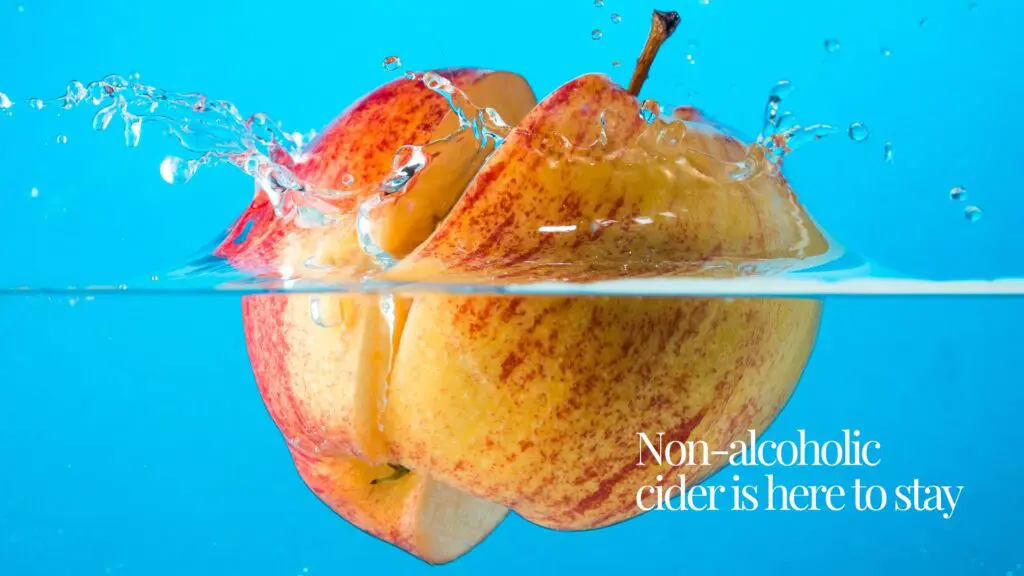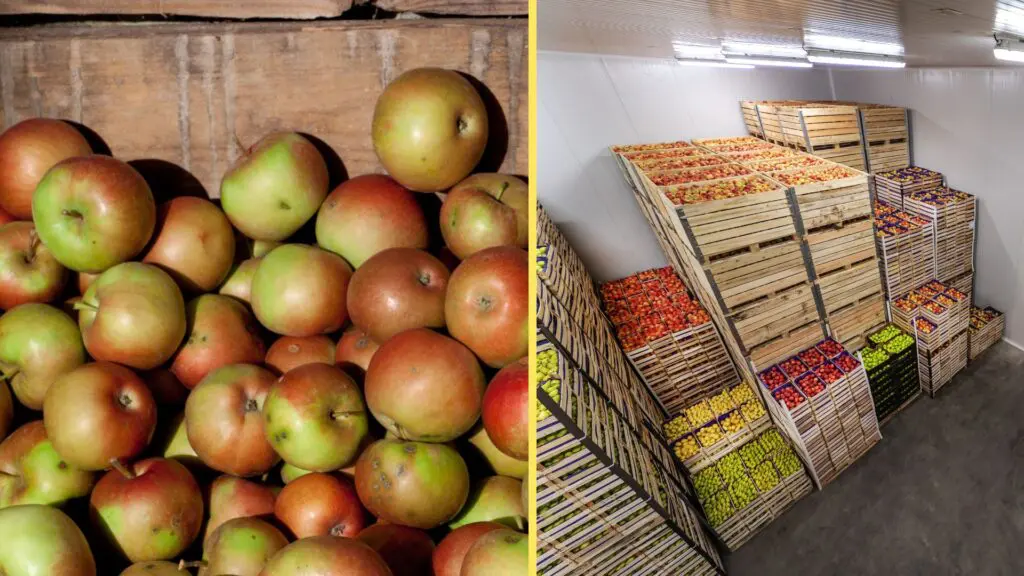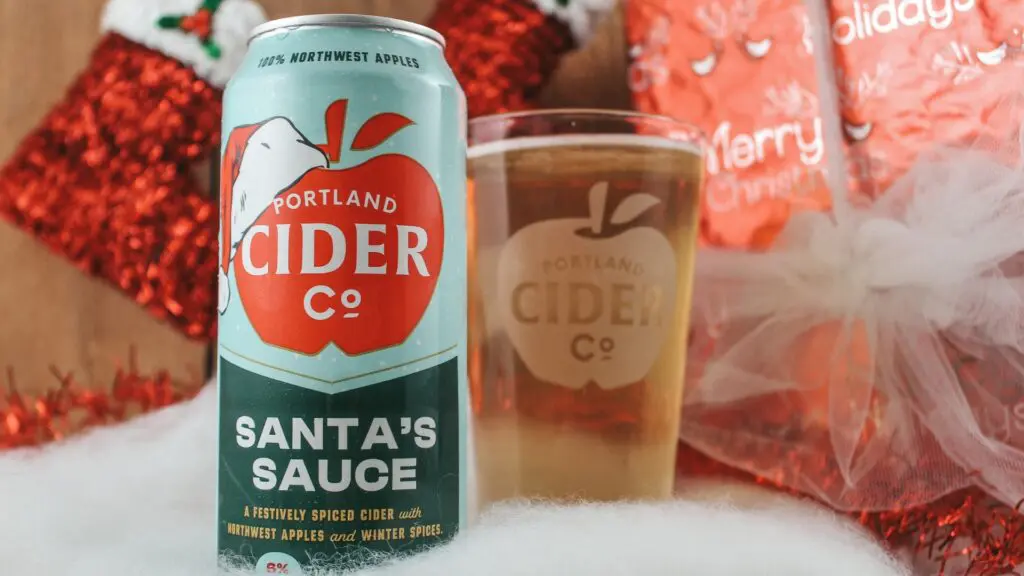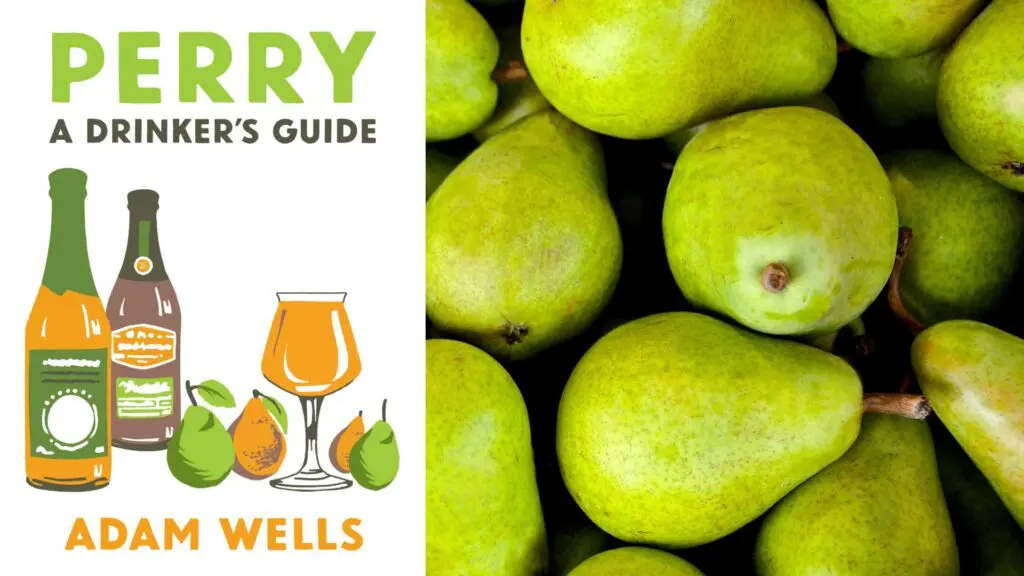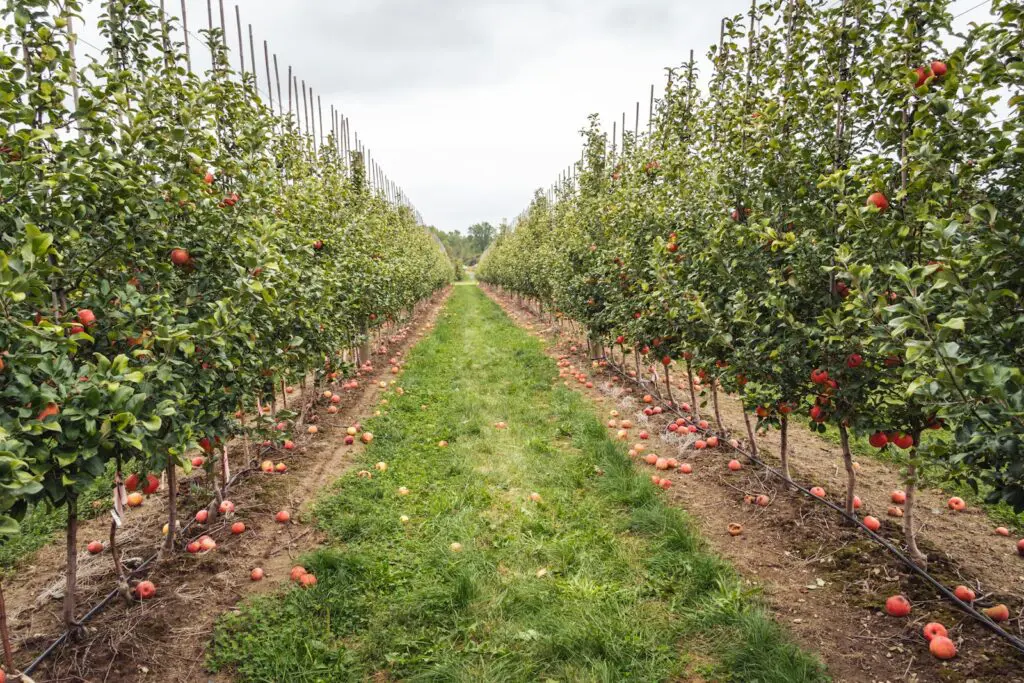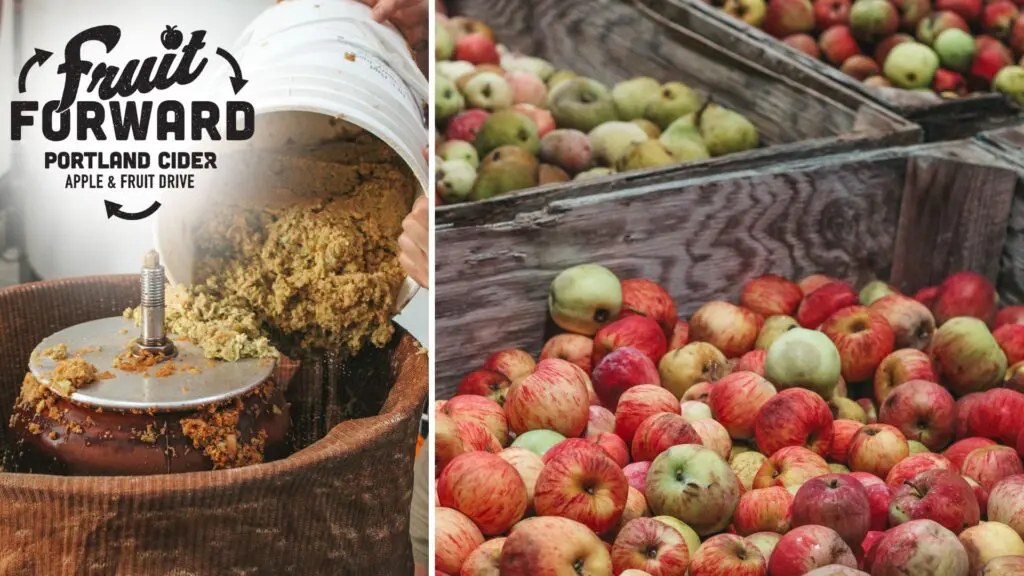By Tyler Hurst
Photos by Blue Rose Photography
In the cider world, there are two schools of thought—traditional and non-traditional. The traditionalists typically produce simpler ciders: strictly apple-based, with no additives, carbonation, flavoring or anything but the magical pairing of yeast and pressed apples, stored together over time.
In the non-traditional world, flavoring, carbonation, added sugar and other additives are more commonplace. While both sides produce excellent ciders, the North American market seems more open to non-traditional offerings. This may be because we’re used to sweet mass-marketed ciders and aren’t ready to splurge on wine-bottle-sized and priced options. Another reason could be that there just aren’t enough great cider apples available to make traditional cider in quantity. Regardless of the grounds, non-fruit-flavored ciders are becoming ever more popular.
That’s a good thing, as fruit-flavored anything has long been classified a “girly” drink, which may turn off “manly” imbibers. But hops, ginger, oak chips and pumpkin are here to bridge the gap, and maybe even convince more than a few beer drinkers that cider is far more than alcoholic apple juice.
A SURPLUS OF FLAVORS
For Colin Schilling, co-founder of Seattle-based Schilling Cider, flavoring his cider is a no brainer. His flagship ciders—Dry Hopped, Ginger, and Oak Aged—were all created thanks to this philosophy. It may seem that Schilling simply doesn’t like traditional cider, but that’s certainly not true.
“Fruits have limited flavors,” Schilling says. “Spices can bring out great flavors we sometimes don’t expect.”
His approach to cider is a bit different than most, as he acknowledges his base cider—created mostly with Red Delicious, Granny Smith and Honeycrisp apples—doesn’t have much flavor, and that’s completely okay with him. “Experimentation is one of our specialties,” Schilling says. “Though it’s non-traditional, our cider drinkers are happy with what we offer.”
While Schilling is somewhat known for spicier collaborations—sriracha lime, for example—some of his spiciest concoctions haven’t worked out. “We tried wasabi once,” Schilling says, with a grimace. “Had to throw it out. Never did get it right.”
That hasn’t stopped him from experimenting. His most recent, two styles of cold-brew blends made in collaboration with Seattle Cider Company, tasted great. He attributes its success to making the cold brew in just the right blend and color in order to balance out the low acid in cider. His Oak Aged cider, which has hints of cinnamon, vanilla and soft wood, is perhaps his most complex-tasting offering. Schilling found out long ago that most people don’t really know what cider is supposed to taste like—hint, it’s not alcoholic apple juice—and he’s found additional flavors help customers understand this better.
At his new Cider House in the Seattle neighborhood of Fremont, Schilling and team take their love of flavored cider even further, making their Randall (a machine that infuses cider or beer with a variety of fresh daily ingredients) available daily for anyone looking to add various fruits and spices to their draft choices and allowing customers to customize their pints.
HYPOTHESIS OF HOPS
Building on the foundation of America’s hankering for hops, Salem, Oregon’s Wandering Aengus launched their Anthem line of ciders in 2010 and introduced North America to its first dry-hopped cider.
The idea was suggested to the cidery’s co-owner James Kohn over a couple pints of ale with his Washington state distributor earlier that year. “It’s such a simple idea to put hops in the cider but it didn’t really get there until someone on the outside of cider suggested it,” Kohn says. “I think there a lot of other opportunities like that, it’s more making a mental jump and doing it.”
After experimenting with different boils of hops and different varieties of the plant, Anthem set its style on Cascade dry hops for their inaugural Hop cider. With the availability and consistency of Cascade hops grown in the cidery’s Pacific Northwest home, Anthem can rest assured supply will meet the demand.
“It gives characteristics that really meld well with the characteristics of apples,” says Kohn. “If you take away malts, you need a base to put the hops with and cider, with its malic acid and tart nature, goes with the citrusy floral nature of Cascade hops.”
Although Wandering Aengus and Anthem have their own orchard, they source the majority of their fruit from farms across Washington and Oregon. Their focus is on producing high-quality ciders from high-quality apples from orchards they have long-standing, established relationships with.
Pressing and blending more than 40 varieties between the two cider labels, Kohn says he sees the advantage to offering differentiation in cider styles. “It opens up the realm of cider,” Kohn says. “It’s still developing and still maturing but there’s a lot of potential for hops to be a style within cider.”
THE SCIENCE OF SAVORY
Due east in Walton, New York, Awestruck Cider is also a fan of non-fruit-flavored experimentation. Business partners Patti Wilcox and Casey Vitti make cider because they love drinking it. After familiarizing themselves with Magners Irish Cider, they wanted to be able to make their own, while paying attention to more than just taste, but also appearance, color and aroma.
“We fell in love with Magners, especially the rosy, caramel color,” Wilcox says. “Turns out, that look was just caramel coloring, which was disappointing.”
Disappointed, yes, but not giving up, the duo experimented with all kinds of spices, eventually settling on hibiscus and ginger, which gave their cider a rosy glow that stands out compared to the competition. Next, they tried lavender for its hopeful purple hue, but that didn’t turn out. Thankfully, the powerful lavender paired nicely with hops, so the team went with it.
This was surprising to both of them, as Wilcox is not a fan of hops in beer. “I can’t drink beer,” she says. “Just don’t like it. Can’t get over the bitterness.”
Wilcox says most non-fruit additives are delicate, meaning preparation like occasional steeping and infusion cannot be rushed. When they tried to speed the process up, they noticed deficiencies and resorted to experimenting with different sweeteners to force a balance.
“Agave wasn’t a hit, artificial sugar was the worst,” Wilcox says. “Tartness requires some added sugar to balance it out, which also adds body to the mouthfeel.”
With both Hibiscus Ginger and Lavender Hops now shipping, Wilcox is confident they have figured it out, but stress that flavoring is as much science as it is art. “Start with a good base and play with everything,” she says. “Quantities, too. Sometimes the key is amounts and sugar can bring out totally different flavors.”
CROSSOVER CONSIDERATION
Just across the border, Caledon, Ontario’s Spirit Tree Estate Cidery is in on this too, legally speaking.
Spirit Tree Estate Cidery’s married founders Nicole Judge and Thomas Wilson didn’t start flavoring their ciders specifically for their customers, they did it to get their cider in government-controlled stores. The Liquor Control Board of Ontario (LCBO) is a bit stricter than most U.S. state and federal regulations, so pleasing the LCBO was paramount. Successfully, their Dry-Hopped Cider made it through.
“We did a Toronto festival with the Dry-Hopped,” Wilson says. “Feedback from [the festival] convinced us to keep at it.”
Wilson believes there’s huge potential in hopped ciders. From experimenting with different variety apples and hops, he says he can create a tremendous flavor profile that appeals to even non-cider fans. “The Dry-Hopped is popular on its own, but we get good crossover from beer fans,” Wilson says. “They try it and it works, giving them a whole new appreciation for cider, blowing beer fan’s minds when they taste their familiar hops in a totally different way.”
Their experimentation doesn’t stop with hops. Cysers, New England-style, buckwheat honey, and sumac and lavender are among their creations, which they serve at their bar or give to supporting craft beer and cider pubs and retailers.
Don’t mistake Spirit Tree for non-traditional cider, though. From their family farm that planted orchards in 1952 to property they now own at the north end of Ontario wine country, they follow traditional methods when possible. They press juice on site, cold-ferment it in a specially-built cellar and age their product for at least six months. They’ve recently incorporated barrel aging into their repertoire, as they enjoyed playing around with the acidity and cream character from the barrel.
CINDERELLA CIDER
In upstate New York, there’s a cider company in Warwick making a flavored cider so well even craft brewing fans have voted it number one.
For Doc’s Draft Hard Cider co-owner Jeremy Kidde and the team at Warwick Valley Winery & Distillery, flavoring their cider with anything but fruit was not on the top of their mind at first. After experimenting with more than a dozen locally grown apple varieties, they moved on to raspberry, pear, black currant and sour cherry before bringing pumpkin into the mix.
“We noticed that pumpkin beers were a huge category, so why not a pumpkin cider?” Kidde says. “After years of tweaking, we think we have a final version.”
That’s saying a lot, as the 2013 mix won top spot in Portland, Oregon’s Willamette Week’s “Drank: The Greatest Pumpkin” review that same year. It beat out 22 other beer and cider entries. In a town where craft brew reigns supreme, their win stood out.
“It’s the labor that makes our pumpkin different, we think,” Kidde says. “Real, roasted Cinderella pumpkins, hand-cut ginger, nutmeg, cinnamon—all fresh—are key.”
To keep up with the demand, Kidde says they make multiple batches and bottle during the season. This allows them to mostly satisfy the initial mad rush as well as have some breathing room in case any one batch doesn’t come out right.
In addition to pumpkin, Doc’s Draft Hard Cider also features a dry-hopped variety, which satiates the beer fans that accompany more than 100,000 cider drinkers to their tasting room each year. “One of our top questions was ‘Why don’t you serve beer?’,” Kidde says. “We give them our dry-hopped. Nine out of 10 love it and ask for it again.”
These cider makers know cider has a long ways to go before the North American public accepts and demands it like they do their beer. And while there may never be a true Bud Light of the cider world, cider lovers can count on their drink of choice to grow just like craft beer did, hopefully soon giving them more options at local supermarkets and the like. And, thankfully, not all of it will taste like sweet, alcoholic apple juice.


